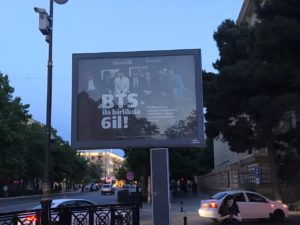As the outbreak of the novel coronavirus disease caused great damage to tourism in the world, developing an effective promotion way to revitalize inbound tourism is an important issue. And today’s blog post will analyze the study of neuromarketing tools in the tourist industry of Japan.
In this study, the authors conducted an experiment to examine whether photos (still images) or videos of scenery are more effective to stimulate tourists’ interest to visit Japan with an approach utilizing neuromarketing.
Neuromarketing in Tourism Industry
As neuromarketing is relatively new, there have not been many studies in the tourism field. There is a study, especially for inbound tourism in Japan. For example, JTB Tourism Research & Consulting Co. conducted a survey on the intention of American tourists visiting Japan and a neuromarketing experiment on preferable photos by measuring brain waves and eye movements and by analyzing subjective assessment [JTB Tourism Research & Consulting, 2019]. They found that the photos that American subjects liked in their questionnaire results differ from the ones in brain wave and eye movement results. They liked unfamiliar scenery but with brain wave and eye movement measurement, they preferred the photos of a different culture.
For the studies outside of Japan, researchers performed a neuromarketing experiment on emotional responses to destination marketing stimuli by using electroencephalography (EEG). They found that emotional responses to the destination stimuli, (photos), were stronger after seeing a movie that was related to the destination. For example, a popular movie is used for effective destination marketing.
Tools of neuromarketing
In this case study, researchers used NIRS to measure brain activities in the experiment. NIRS is a non-invasive device that uses near-infrared light to measure brain activity, which is indicated as hemoglobin concentration rate.
SD method of neuromarketing in tourism
The experiment was conducted with relaxing scenery in the form of photos and videos to see how the subjects evaluate them by a questionnaire. Researchers used the Semantic Differential method (SD method) to make the questionnaire. The SD method was developed by Osgood et al. [1957] and it is one of the rating scales to measure the connotative meaning of concepts or attitudes and so on. It uses a set of two polar adjectives such as “soft-hard” or “interesting-boring” as a factor. The previous studies in the tourism field uncovered the effectiveness of photos or videos as a promotion tool by comparing the subjects’ conscious and subconscious parts.
Experiment methods
As mentioned before, many foreign tourists visiting Japan seek some healing or relaxation during their trip. . The goal of this study was to investigate effective inbound promotion tools on SNS or websites.
Participants were 12 Japanese students who were between 18 and 25 years old. There were 11 male students and 1 female student. The photo and video images were related to nature and scenery sightseeing. Researchers chose several images depicting the seas because 39 prefectures are facing the sea out of 47 prefectures in Japan. The seas and oceans are one of Japan’s primary natural resources and tourist attraction sites. The purpose of this experiment is to see whether photo or video is more effective as a tool for tourism promotion on SNS or website
Results
In this study, researchers conducted a preliminary experiment to investigate the difference between photo and video as a promotion tool by using brain activity measurement and impression measurement. In the experiment, the cerebral blood flow change in the right side of the prefrontal area started gradually to lower for both photos and videos. The changes were similar. As for the impression the evaluations of photo and video for each image were also similar.
When there were some characteristics of brain activity and impression evaluation, some unique factors on images were seen as a reason. In conclusion, it is possible to say that there are not so significant differences between photos and videos in brain activities (subconscious part) and in impressions (conscious part). Photos or videos can be useful as a promotion tool, but photos possibly have more advantages considering the cost performance.
References:
‘Preliminary examination of scenery images for tourism promotion using aneuromarketing approach’ (Kayoko H. Murakami,Atsuko K. Yamazaki,Rui Takahashi,Kenichi Kowata,Jingge Ding, Muhammad N. A. B. M. Anuardi,Kenichiro Yoshikawa,Katsutoshi Waki ) Journal of Global Tourism Research, Volume 6, Number 1, 2021


